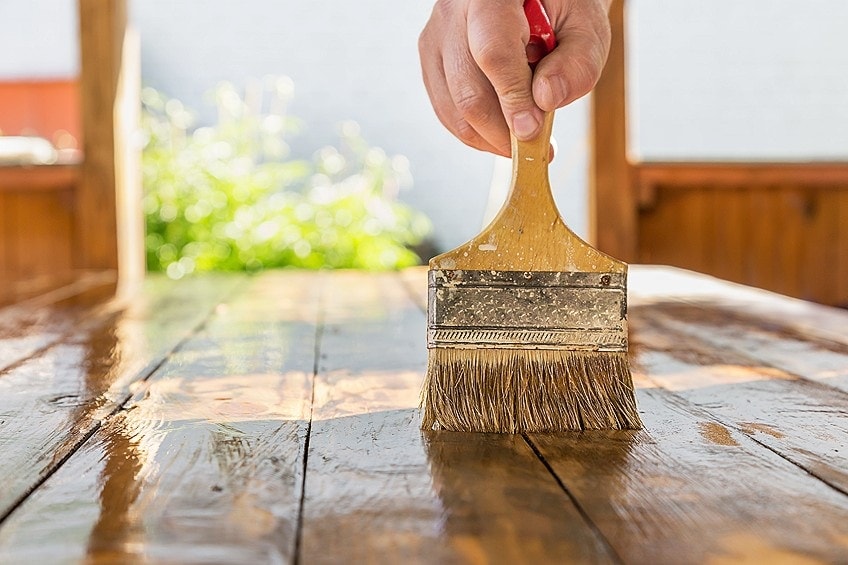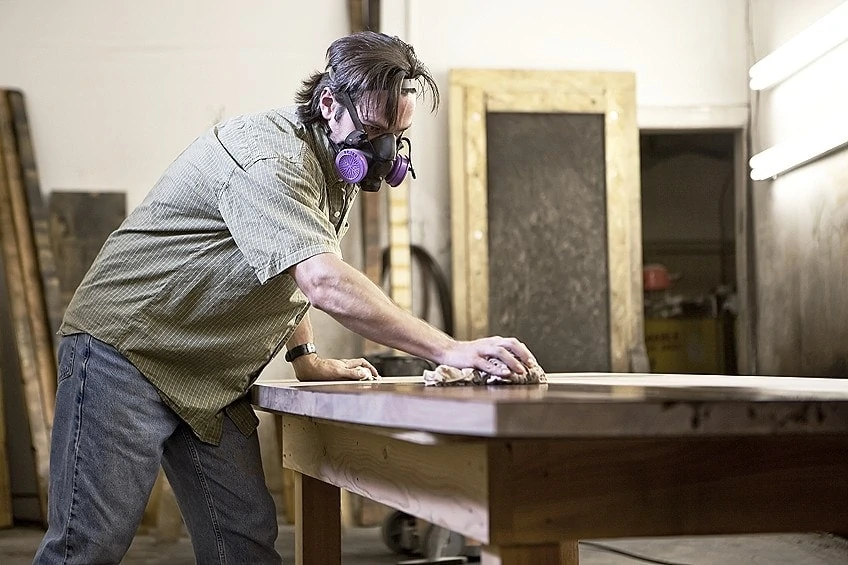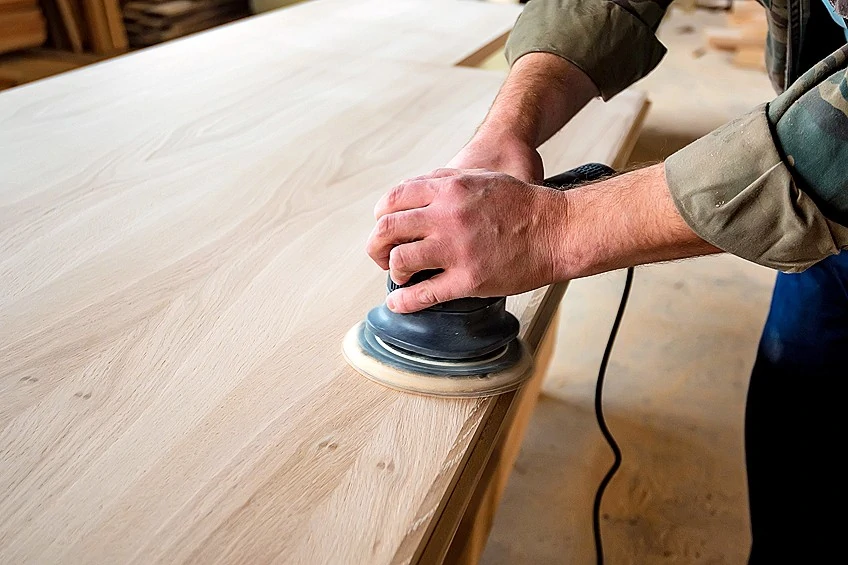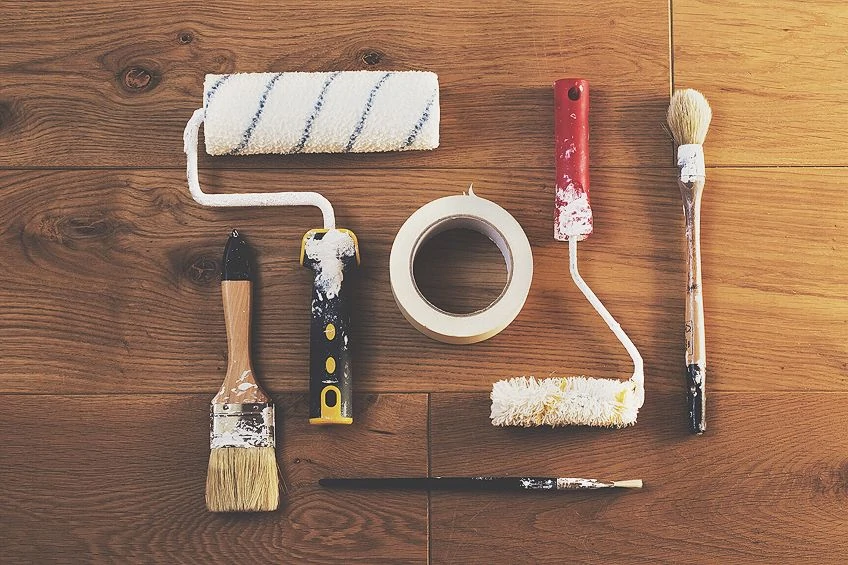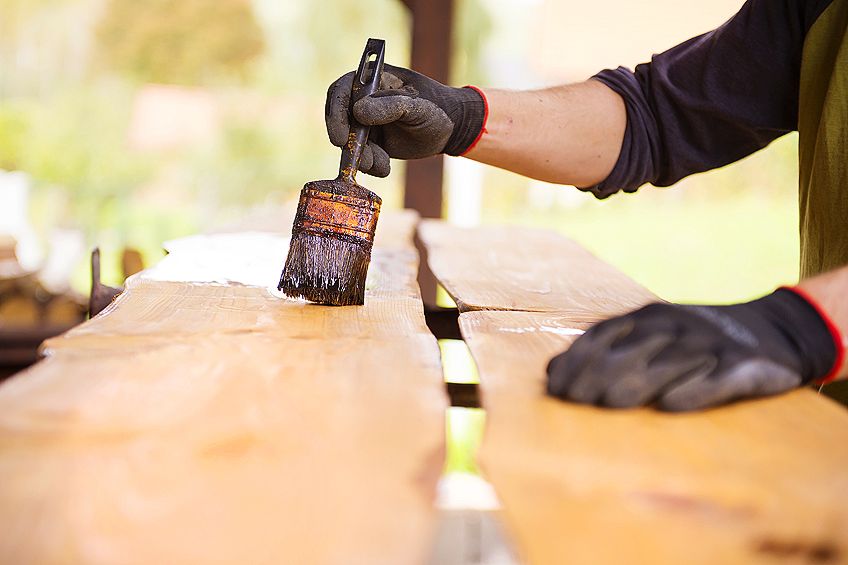How to Paint Over Stained Wood – Top Methods [Guide]
This post may contain affiliate links. We may earn a small commission from purchases made through them, at no additional cost to you. You help to support resin-expert.com
Giving new life to an old sentimental piece of wooden furniture and fixtures in your home can be fulfilling and rewarding. The special touch of painting the stained wood can make it even more desirable for DIY home renovators. Painting over your stained wood is one of the most affordable ways to upcycle your once-loved furniture. Painting over stained wood can present some difficulties, however, so in this article, we are going to lead you through various methods that can make it much easier.
Table of Contents
What Makes Painting Over Stained Wood so Difficult?
While the process of painting over stained wood can be very rewarding, it can present some difficulties. Often the stain on the wood can make the painting process much longer, and this can discourage people from attempting their own DIY projects. When it comes to people having difficulties painting over stained wood, it is rarely the stain that is the problem. Instead, it is often the shiny and protective layer of varnish that will create difficulties getting your paint to stick to the surface.
Fortunately, there are several easy methods that you can use to paint over stained wood. Some methods require you to sand or de-gloss the surface, while others use paint specially formulated for painting over varnish. Depending on the condition of your stained wood, the type of stain used, and the form that the wood takes, you will need to use slightly different methods for painting.
Determining the Type of Stain
Before you get started, you need to determine what kind of stain you have on your wood. The stain will either be water- or oil-based. Water-based stains require little preparation and you can paint directly onto the stained surface. In contrast, oil-based stains require additional preparation because they can repel the paint. You can quickly determine which type of stain you are dealing with by sprinkling a tiny amount of water on a section of the wood. If after around a minute, the water begins to bead up, the stain is oil-based.
A Step-by-Step Guide to Painting Over Wood with Oil-Based Stain
We have prepared an easy step-by-step guide to help you paint over oil-stained wood. There are several variations in the method, depending on your wood and the scope of your budget. We cover these variations as we go, and we also suggest some products to help make your life much easier. For this method you will need the following items:
- A screwdriver
- Paintbrushes
- A tarp sheet
- Grit sandpaper or liquid sandpaper
- Safety mask and gloves
- A Paint primer
- A tack cloth
- Painters tape
- Polycrylic Protective Finish
- Wood filler
Preparing Your Workspace
DIY projects that involve painting over stained wood often take a few days, so it is essential that you have a set-up workspace. It is best not to move the wooden pieces around throughout the process, so try to find somewhere that you can leave things for a few days. Ideally, you need to work in a fairly large area with good ventilation.
You will need to protect the floor of your workspace with a tarp to prevent spillage.
Cleaning the Surface
The first thing you need to do is to remove any fittings on the wood. If it is a cabinet with handles, hinges, or any other non-wood fittings, you need to remove them at this point. If you do not remove these items at this stage, they will become covered in paint and you will only have to clean them at a later stage, extending your project. The second step in painting over wood with oil-based stains is to wash the wood with dish soap. Using dish soap to wash the wood removes any grease or dirt that has collected on the surface. The third step to preparing cleaning the surface of your wood is to fill any cracks or holes in the wood with some wood filler.
Preparing the Surface for Painting
You have washed down the wooden surface and removed all the bits and bobs you do not want to get paint on. It is at this stage of the process where the options begin to appear. Painting over stained wood without sanding will result in the stain bleeding through your paint. There are three different options for this step. For the first option, you can use sandpaper to sand down the wooden surface and remove the gloss from the oil-based stain. The second option is to use a primer that adheres to the glossy surface and prevents any seeping through. The final option is to use a deglossing agent or liquid sandpaper.
The point of all of this step is to remove the gloss from the surface of the wood, allowing the paint to adhere to the surface properly and to prevent any varnish from seeping through your paint.
Sanding
The main goal of sanding is to make the stained wood rugged enough for the paint to hold onto. Depending on the scale of your wood painting project, you may need an industrial sander or you could simply use sandpaper. Whether you are sanding a large table or a small picture frame, you should use sandpaper that is between 150 and 220 grit. This level of grit is perfect for removing the varnish and creating a tactile surface for your paint to stick to. It is essential to always wipe your surface with a tack cloth after sanding to make sure it is dust-free and to remove any particle or residue left by the sandpaper.
Deglossing
While sanding can take up to a couple of hours to prepare the wood for paint, you can achieve the same result in around 15 minutes by using liquid sandpaper. You can apply the liquid sandpaper or deglossing agent with a firm synthetic paintbrush. After you have painted the liquid sandpaper onto the wooden surface, wait 15 minutes to dry. Finally, you need to wipe down the surface to remove any remaining residue and grime. and then you just have to wipe off any residue on the surface. The wood surface will now be ready for you to put paint or primer on. The greatest thing about liquid sandpaper is that it is a water-based stripper. This means that you can easily clean your brushes with nothing more than water. Below is our recommendation for liquid sandpaper that you can purchase on Amazon.
Using a Primer
If sanding or even using liquid sandpaper sounds like one step too many, you can go straight in by using a primer designed for painting over stained wood. Applying a primer is an essential step for painting over stained wood, even after you have sanded it, so by using this kind of primer you are saving yourself a few steps. The primer below is our recommendation if you want to skip the sanding process for your stained wood.
Priming Your Wooden Surface
If you chose to use the primer in the last step, you can move right on to the next one. If you sanded your wood or used the liquid sandpaper, you now need to prime your wooden surface. The main purpose of priming your wooden surface is to seal the wood and create a good surface for the paint to bond to.
While water-based primers tend to be less toxic and have a better odor, oil-based primers are more protective.
You can use a paintbrush or foam roller to apply your primer to your wooden surface. After the primer has dried, remember to wipe down the surface with your tack cloth to remove any dirt and grime.
Time to Paint!
Once your primer is completely dry, wipe it down with the tack cloth to remove any dirt. The type of paint you choose to use depends entirely on the finish you want. There are several different finishes available, including matte, shiny, and chalk. You will typically need to apply two to three coats of your paint, and maybe an extra few if you have a lighter shade.
Latex-based paints do not have a strong odor once they are dry, so we suggest using these for indoor wooden objects, like doors and cabinets. For areas of high traffic and wooden surfaces outside, we suggest using oil-based paint. You can apply both types of paint with either a paintbrush, an airless sprayer, or a foam roller. After you have applied your first coat of paint, wait for at least six hours before applying another, to ensure the paint is fully dry.
Applying a Finish
Once you have applied all the necessary coats of paint and you have left your wooden surface to dry completely, you need to apply a finish to protect the wood and preserve the paint job. We suggest using a polycrylic finish because they are most effective and give your wood a beautiful glossy finish.
Tips and Safety Precautions for Painting over Stained Wood
As we have mentioned already, it is best to paint over stained wood in a well-ventilated space because the liquid sandpaper, primers, and wood paints can produce unpleasant and potentially harmful odors.
For extra protection, we suggest wearing gloves and a mask. Here are some additional tips and tricks to help you get the most out of your wood paint.
- Use a fan to encourage airflow, if you have to work indoors.
- Plan upfront before you start buying what you think you might need, so you do not end up buying things you do not need at the suggestion of a salesman.
- Use disposable rollers, if you do not want to clean up afterward.
- Wear old clothes so that you can really focus on the project without worrying about getting things dirty.
Painting stained wood is a fantastic way to breathe new life into a loved piece of wood. Although the staining does pose a bit more of a barrier, there are many products available to make your life much easier.
View our Can You Paint Over Stained Wood web story here.
Frequently Asked Questions
Can You Paint Directly Onto Stained Wood?
No. Painting onto stained wood can look good for a little while, but after some time you will find that the stain can bleed through the paint. It is always best to sand down the wooden surface to remove the stained gloss, and then prepare the wood for painting with a primer.
Can You Actually Remove the Stain Completely?
It is very difficult to remove the stain from your wood completely, even after using sandpaper or liquid sandpaper. The stain seeps into the substance of the wood, and so you can only really remove the stain that sits on the surface.
What Is the Best Paint for Painting Over Stained Wood?
The type of paint you choose to use really depends on the job at hand. If you are painting an outdoor wood surface, then we recommend oil-based paint. Indoor surfaces can be painted with latex paint. The type of finish you want will also determine whether you buy chalk paint or one with a matte or glossy finish.


